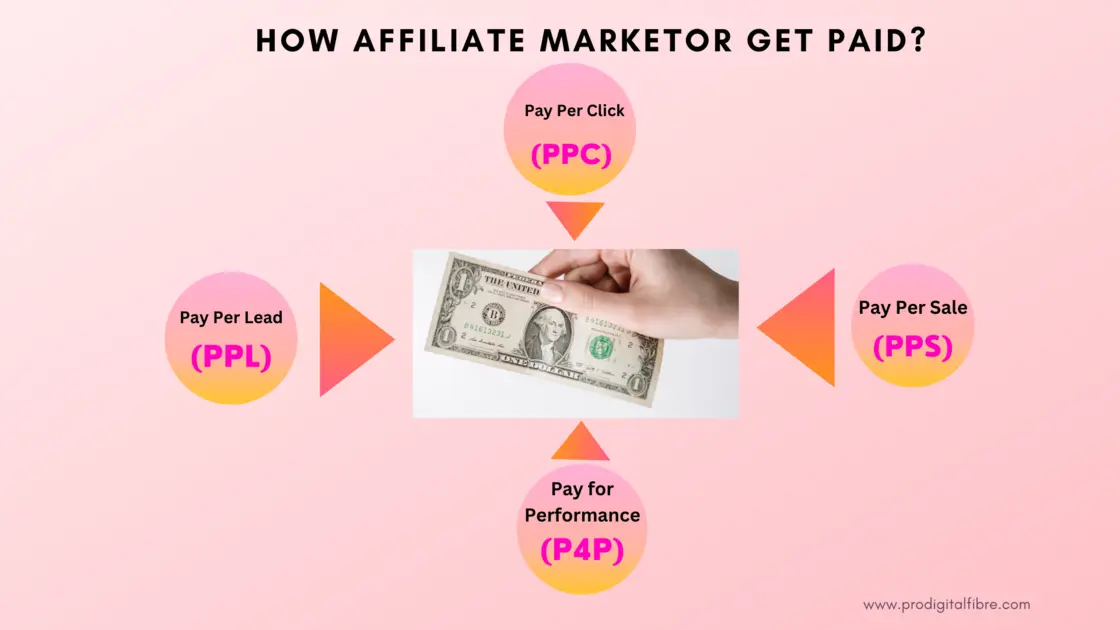In this article, I will discuss the basics and provide an overview of payment metrics in affiliate marketing or internet marketing as a whole.
Payment metrics in affiliate marketing
You promote my Product on your Web site and I will pay you a commission, or I will promote your service on my website and you pay me a commission. Any commercial link on any Web site is tracked and tied to an affiliate website and commission is paid in some form or another with different desired payment metrics as discussed in the following subheads.
PPC (Pay Per Click)
Some affiliate programs operate on a Pay-per-click (PPC) basis and some are strictly sales-based. With PPC programs, the affiliates get credit based on the number of clicks on ads or banners on their Web sites.
PPC refers to pay per click, an online marketing methodology where advertisers pay money each time their ads are clicked. In fact, it is a way to buy a visit to your site, rather than trying to “earn” that live visit. Search engine optimization marketing is one of the most popular types of PPC. Allows advertisers to personalize ad placement in search engine sponsored links when someone searches for a keyword related to their business.
PPS (Pay Per Sale)
The most common payment method in affiliate marketing, where the advertiser pays a commission to the website owner whenever a user clicks on an affiliate link or ad that is promoted to them and buys the product or places an order.
In this metric affiliates only get credit when the site visitor completes a purchase or other transaction on the affiliate merchant’s Web site. Pay per action, sometimes referred to as the cost of each action, marketing is a process that pays the owner or publisher of the Website based on the amount of advertising generated by the ad on the site. Under this agreement, the advertiser must pay only for the site-generated sales based on the pre-agreed commission rate.
This process is the most popular among advertisers, yet it is usually the smallest option among publishers. There is some basic knowledge of affiliate marketing required before you join an affiliate program and certainly before you start your own affiliate program on your Web site.
The PPS advertising model is simple and easy to use. Once the agreements are made, the website publishers simply publish the ads on their sites and earn revenue per sale. The advertiser provides advertising technology and manages basic technologies to credit payments to publishers.
PPL (Pay Per Lead)
This payment metric is also called CPL (cost per lead). In this marketing model, there is an agreement between between advertiser and business owner. The advertiser undertakes to provide tracking to the partner company and is paid a commission for generating lead. ShareASale is an example of PPL, undoubtedly most PPL offering of the top affiliate networks.
The following is an example to understand the term PPL or CPL
Consider your company spent $ 500 on your pay-per-click (PPC) campaign and 10 users convert to leads:
Cost per lead = $ 500/10 = $50
This will depend on the different prices for a business selling luxury products (high-cost luxury cars) to low-value products(toy buses). If the cost per lead is too high in comparison to the cost of your product or service you will need to adjust your pay-per-click (PPC) campaign accordingly.
This marketing model already needs to test this segment of audiences, earn and encourage third parties to be motivated by bringing more leads. Many leads are missing for a number of reasons. Qualified leads will remain in the sales position until the end by becoming future clients. It is also worthwhile for the company to inform and make their approach easier in the payment process.
P4P (Pay for Performance)
Pay per Performance is a payment metric of online marketing, a combination of paid advertising and brand marketing. This refers to advertising campaigns in which affiliates and marketing companies are only paid when some desired action, such as a lead, sale, subscription, booking or download, or any other desired action is completed.
“Pay for performance advertising (P4P) is a term used in internet marketing to define a pricing model whereby a marketing or advertising will receive a payment or bonus from an advertiser for ‘performance’. This may be in the form of each new lead or new customer obtained for the advertiser through the agency’s online marketing efforts or some other ‘performance’ metric the agency and client agree upon before beginning.” –Wikipedia
An affiliate promotes the company’s product and earns a credit from the company for each lead, sale, subscription of newsletter or booking, which is tracked via affiliate links placed on its website.
Pay per Performance marketing, however, the main aim of the company is to improve its performance. The affiliate is paid when he achieves the desired result, which is the target for that campaign, rather than paying the affiliate marketing agency only when a sale of a specific product or service is made.
Conclusion
In the above post, I discussed and tried to explain basics of payment metrics of affiliate marketing. I hope you have learned something from this post and enhanced the knowledge.
